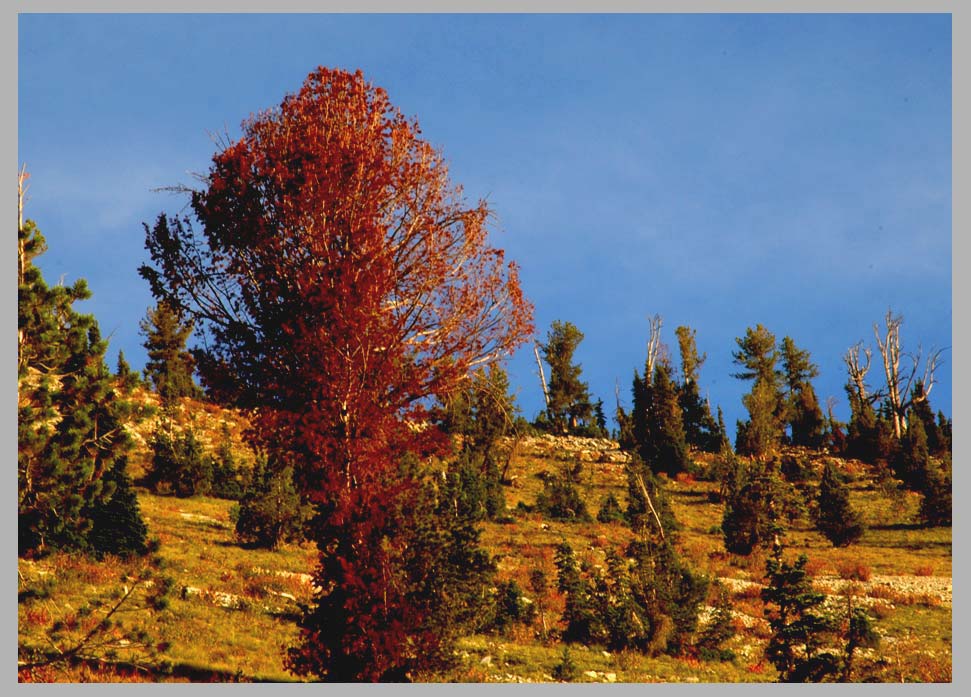Whitebark Pines are in trouble around the mountains of the Northwest.
For me, they have become a sentinel species because they are not only
the grandest and, in my view, most powerful of pines to reach the upper
limits of treeline—even in death the sun-bleached white snags stand tall
for centuries—but also, like wounded watchful elders, the Nestors of
the high-country, they are sounding a message of warning.
In the Alps, a related species of stonepine, Pinus cembra, is
an object of much veneration and folklore. Just the act of an old mountain
farmer saying its name in dialect, Arve, seems to fill him with a kind
of primeval religious awe. Indeed, it has for hundreds of years been
the favored wood for carving, and remarkably, for works of Art which
show when seen within the traditional European cultural categories both
sacred and profane aspects, ie., both crucifixes & 'wildman' masks for
mountain carnival, Fastnacht.
I mention this only because I am repeatedly reminded that no similar
tradition, as far as I know, exists in North America. Perhaps that is why
only a handful of dedicated scientific researchers seem to be listening
seriously to what the Whitebarks are saying, and not the culture at
large. For as always—and this is sad to say, and is of course only my
own opinion—North American culture is largely indifferent, is largely
uninformed by the spirit of its great mountains.
Perhaps that is why I feel somehow compelled to mark in image and
word as many of the sick stonepines as possible that I meet along
the way.
| see also: Whitebark Pines: Endangered Sentinel for a collection of more images |
